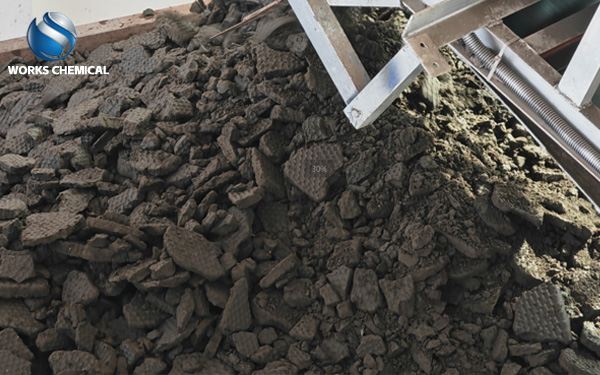
In view of the problems such as the high cost of traditional agents and corrosion equipment in sludge treatment, the following measures can be taken to solve them:

One, reduce drug costs
Select highly effective agents:
Through experimental testing and field practice, choose efficient agents suitable for their own sludge characteristics, avoid blindly pursuing high or low price agents.
For example, for high organic sludge, you can choose to use sludge synergists, such as SJC-08, etc., these agents can effectively reduce the water content, while reducing the amount of agents, thereby reducing the cost.
Optimize dosage:
According to the real-time change of sludge and sludge effect, dynamically adjust the dosage of the agent to ensure the best dosage ratio and avoid the waste of the agent.
Through the intelligent control system, the indicators in the sludge treatment process are monitored in real time, and the dosage of the agent is automatically adjusted to achieve accurate control.
Use of alternative agents:
Consider using unconventional or novel agents as an alternative, which may have a higher cost performance and better treatment effect.
For example, the alternative of lime + ferric chloride could be used, or a combination of other organic or inorganic agents could be explored to achieve the purpose of reducing costs.
Two, reduce equipment corrosion
Selection of corrosion-resistant materials:
In the selection of sludge treatment equipment, priority is given to the use of corrosion and wear resistant materials, such as stainless steel, alloy steel, etc., in order to improve the corrosion resistance of the equipment.
Strengthen equipment maintenance:
Regular inspection and maintenance of sludge treatment equipment, timely detection and treatment of equipment failures and corrosion problems.
Focus on the protection and repair of easily corroded parts, such as coating anti-corrosion paint, installation of anti-corrosion lining, etc.
Optimize equipment operating parameters:
By adjusting the operating parameters of the device, such as temperature, pressure, and flow rate, the corrosion environment inside the device is reduced.
For example, in the process of sludge dewatering, reasonable control of the pressure and speed of the dehydrator to avoid corrosion due to excessive wear and tear of the equipment.
Three. Comprehensive Measures
Improve sludge treatment efficiency:
By improving the sludge treatment process and flow, improve the efficiency and quality of sludge treatment, thereby reducing the use of chemicals and the operation time of equipment.
For example, the use of advanced sludge dewatering technology, optimization of sludge transport and storage methods.
Strengthen staff training and management:
Improve the staff's knowledge and skill level of sludge treatment process and agent use to ensure that they can operate equipment and use agents correctly and in a standardized manner.
Establish a sound equipment management system and drug use records, strengthen the monitoring and management of equipment operating status and drug use.
Explore the way of resource utilization:
Actively explore the ways of sludge resource utilization, such as using sludge for brick making, incineration for power generation, land improvement, etc., in order to achieve the reduction, harmless and resource utilization of sludge.
This can not only reduce the cost of sludge treatment, but also bring additional economic and social benefits to enterprises.
In summary, in view of the high cost of traditional agents in sludge treatment, corrosion equipment and other problems, It can be solved from the aspects of selecting efficient agents (sludge enhancers), optimizing the dosage of agents, adopting alternative agents, selecting corrosion resistant materials, strengthening equipment maintenance, optimizing equipment operating parameters, improving sludge treatment efficiency, strengthening staff training and management, and exploring resource utilization ways. The implementation of these measures will help to reduce the cost of sludge treatment, reduce the risk of equipment corrosion and improve the overall economic and social benefits of enterprises.